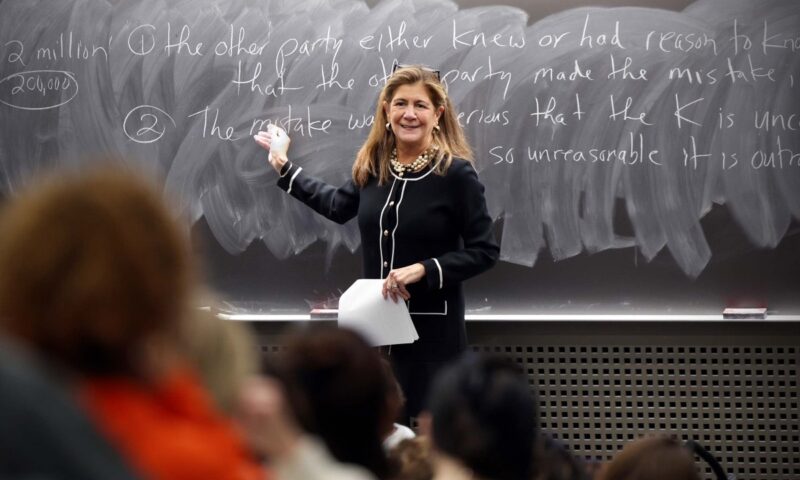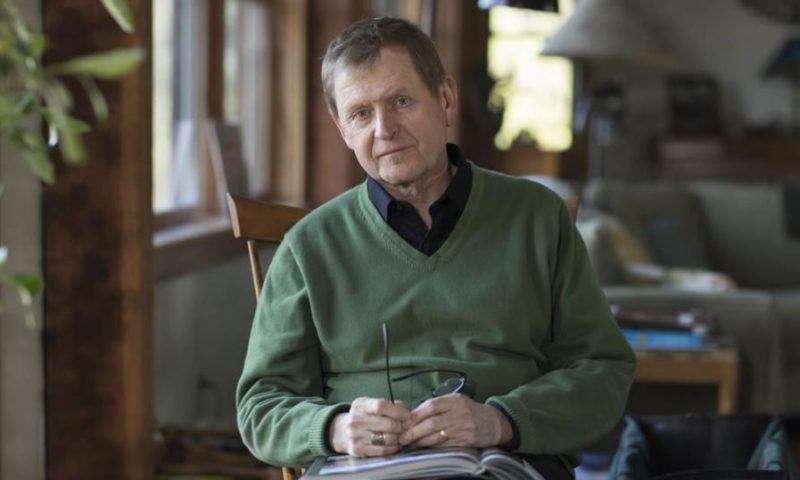Back in 2017, McIntire Finance Professors Robert Parham and Chris Yung began collaborating with Information Technology & Innovation Professor Brent Kitchens on an interesting research idea about the impacts of information disclosure on stock trading. The result of their scholarship, “Is News Really News: The Effects of Selective Disclosure Regulations,” has turned out to be groundbreaking.
The three Commerce faculty were awarded the IQAM Prize in Financial Economics—the Review of Finance journal’s Best Paper Prize—at the European Finance Association’s annual meeting Aug. 20-23, 2025, in Paris. The IQAM Prize in Financial Economics is awarded each year to the best investments paper published in the journal within the past year, from July to June.
Yung’s interest in researching the subject began years ago when he took note of a striking contrast in stock trading patterns between developing and developed markets. “In developing markets, stocks tend to move in lockstep—rising together on good days and falling on bad ones—suggesting a lack of company-specific information driving daily price changes,” he says. “In contrast, developed markets like the U.S. and EU show diverse stock movements, with some companies’ stocks soaring while others dip on the same day, implying a rich flow of individual firm information.”
He found it puzzling that those price movements often didn’t align with public news releases. A company’s bad news announced on Thursday might see its stock price shift days earlier, hinting at selective disclosure to favored investors.
Parham believes that the most important aspect of their paper is its ability to show that “disclosure policy materially changed the timing of price discovery,” namely, when information becomes embedded in stock prices.
“Prior to fair disclosure rules—2001 in the U.S. and 2005 in the EU—informed trading often preempted public announcements. This means insider trading was rampant, and by the time a company announced some ‘news’ publicly, the stock market already reacted,” he explains. “That is, prices moved on ‘ordinary days’ prior to the announcement because insiders bought/sold rather than on ‘news days.’ After Regulation Fair Disclosure (Reg FD) and analogous European rules, the arrival of information re-centers on the official disclosure. This shift resolves an old puzzle in finance known as ‘Roll’s R² puzzle’ in a policy-consistent way and clarifies why announcement-day return patterns look so different before and after the early-2000s reforms.”
For Kitchens, who says his lens on the paper’s thesis, as an information systems researcher, notably differs from Parham and Yung’s finance view, the work evolved from an interest cultivated early in his time as a Ph.D. student.
“I was curious if, over long spans of time, as technology-enabled information began to be more available, up to date, detailed, and targeted, these improvements would gradually improve investors’ abilities to make informed decisions regarding their investments,” he recalls. “It turns out this was pretty naive, and even before all of the great technology we have for informing ourselves today, markets were pretty good at picking up signals and adjusting prices based on ‘news’—too good, in fact. All it took was a few well-informed people to trade on new information, and the market saw this and adjusted—apparently before the news even became public.”
Yet Kitchens’ information systems expertise led him away from the subject until several years ago, when Yung approached him wanting to chat about an idea—one that became the genesis for their paper.
Inspiring Future Research
In detailing what their paper accomplishes, Parham says that their theory generalizes the Kyle (1985) model, which explains how private information becomes public through trading, thereby moving beyond a binary idea of informed versus uninformed toward a continuum of degrees of knowledge.
Yung notes that they hypothesized that selective disclosure practices—those in which analysts tipped off select investors before public announcements—were driving these premature price reactions. “To test this, we compiled a massive database of millions of news articles from the U.S., EU, Japan, and Australia, each time-stamped and linked to specific companies. The unique timing of selective disclosure regulations in these regions—enacted at different points—provided a powerful lens to study their impact,” he recalls. “Our findings confirm that selective disclosure regulations work as intended, significantly reducing premature price movements and ensuring information reaches the market more equitably.”
Empirically, Parham says their work demonstrates that “empirical proxies that used to live in separate corners (R², idiosyncratic volatility, mean absolute deviations, turnover) are actually different aspects of the same latent object. That gives researchers, exchanges, and regulators a coherent yardstick to track informed trading across sectors, regimes, and countries,” he says. He also notes how it also allows for evaluating newer practices such as AI-assisted filings, social media, or alternative-data usage, which may shift “the balance between private information and public disclosure.”
Kitchens hopes the paper inspires others to undertake even further detailed analysis about the kinds of news and dissemination news platforms that are impacting markets the most. “This is much closer to what I originally set out to look into 12-15 years ago, but couldn’t really find anything because it was overwhelmed by the effects we look at in this paper,” he says. “Now that we understand this better, I think there should be more interest in unpacking the nuance.”
Acknowledgement and Accolades
Of course, winning the 2025 Best Investment Paper Award from the Review of Finance offers the Commerce School faculty members some well-earned appreciation for their longstanding commitment to the subject they chose to examine.
“It’s very gratifying, partly because I have been interested in this topic for so long, but also because we have had a very long road with this paper,” says Kitchens. “It’s not always well understood outside of academia, but it’s incredibly difficult to get work published in top outlets. This paper also faced more rejections than any I have worked on, but we kept at it. And to see it win the journal’s best paper award both feels like a vindication, as well as a reward for all of the hard work we put in to improve it every time it came back with another rejection.”
Yung acknowledges the “tremendous honor” of winning the IQAM Review of Finance Best Paper Prize, but says he is most excited by “the clean alignment between our theoretical predictions and empirical results, delivering finding with profound implications for regulators. This work demonstrates how selective disclosure regulations effectively level the playing field, as intended.”
Besides enabling more important research in the years ahead, Parham says the recognition for “careful theory married to transparent identification can move an old debate forward.”
That debate has even been discussed in McIntire classrooms. “Colleagues have already been teaching this paper here in school for a couple of years. Students love it. It’s a single narrative that connects market microstructure, regulation, insider trading, financial theory, and empirical evidence,” Parham says. “It’s a great way of vividly demonstrating to students the theoretical concept of degrees of market efficiency: strong, semi-strong, and weak.”
In addition to its practicality in both the learning and research spheres, Kitchens is heartened by the acknowledgement for their cross-field paper: “It’s very cool to see interdisciplinary work valued so highly. It’s often difficult to work across different scholarly areas because what is valued is so different, and it feels good not only to get a publication, but also this type of recognition, on that kind of work.”
About Faculty Research at McIntire
Faculty research is supported by our generous donor community and is an essential driver of the McIntire School’s mission to innovate curriculum and advance new knowledge across business disciplines. We are grateful to the Glenn H. Gettier, Jr. Endowment (Glenn Gettier, Jr., McIntire ’64), the Craig Powell Faculty Fellowship Fund (Andrew Hee, McIntire ’92), and the Curriculum Development Fund (Curtis Schade, McIntire ’80) for making this scholarly research possible.
About the Review of Finance
The Review of Finance, the official journal of the European Finance Association, aims at a wide circulation and visibility in the finance profession. The journal publishes high-quality papers in all areas of financial economics, both established and newly developing fields.
About the European Finance Association
The European Finance Association (EFA) is a professional association of more than 2,500 professionals and financial economists involved in the high-level research, study, teaching, and practice of finance. The international nonprofit established in 1974 in Belgium organizes an annual meeting in August, as well as doctoral events including an intensive and competitive tutorial designed for Ph.D. students.



